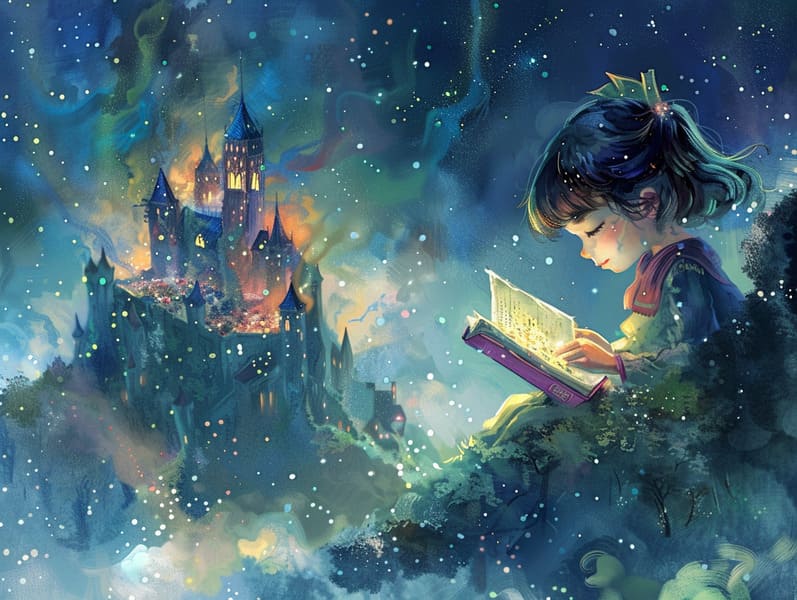
Ancient fairy tales have historical significance. These narratives have been relayed from one generation to the next ages before they were ever inscribed. They emerged from a variety of societies, including Middle Eastern traditions. They were initially transmitted among adults, often carrying themes and messages aligned with the societal norms and beliefs of the time.
The renowned Brothers Grimm, Jacob and Wilhelm Grimm, were among the first to collect and release many of these beloved stories. Their collection, "Grimm's Folk Tales," included narratives like "Cinderella," "The Story of Hansel and Gretel," and "The True Story of Snow White," which have since become hallmarks in the world of iconic fairy tales. Similarly, the Danish author's fanciful stories, such as "The Mermaid," and "The Duckling's Story," have touched hearts worldwide, cementing their place in the pantheon of timeless fairy tales.
Even though they are old, fairy tales remain as significant as ever, especially as nighttime stories for kids. These delightful tales are now available in diverse formats, including richly illustrated books, delightful animations, and internet fairy tales.
Their continued relevance can be ascribed to several whimsical characteristics:
Crucial Morals: Ancient fairy tales often convey important moral lessons. Fairy tales like "The Boy Who Cried Wolf" teach the virtue of honesty, while "The Story of the Tortoise and the Hare" exemplify the values of resolve and meekness. These tales offer little ones clear distinctions between moral and immoral, building their moral compass in a tender yet profound way.
Sympathy and Perception: Old fairy tales frequently showcase beings facing trials and tribulations, urging listeners to identify with their struggles and boost their triumphs. For instance, "Beauty's Beast" points out the value of appreciating inner worth to realize the true character of a individual, promoting tenderness and appreciation.
Cultural Knowledge: Many old fairy tales are deeply embedded in the cultural contexts from which they came. Engaging with these fairy tales can provide fascinating glimpses into different ways of life, enhancing a sense of world appreciation and discernment.
Inventiveness and Fantasy: The magical elements in timeless fairy tales—fairy godmothers—promote children’s innovative ideas. These stories take readers to fantastical realms, provoking imaginative thinking and a sense of marvel that endures a lifetime.
Timeless fairy tales are not only enchanting but also teaching. They function as delightful tools in cultivating various thinking and feeling skills in young ones. When timeless fairy tales are spoken, they improve communication skills by showing new language items and sophisticated sentence structures. This practice also cultivates hearing perception and focus, as children concentrate deeply, eager to see what happens next.
Furthermore, discussing the themes and characters of old fairy tales can improve problem-solving abilities and critical thinking. Children are led to find patterns, anticipate outcomes, and get cause and effect. These discussions also further the young voice their thoughts and feelings, nurturing their emotional intelligence.
In today’s information age, the accessibility of digital fairy tales has made these tales more check it out acquirable than ever. Online resources and mobile apps offer large libraries of children's fairy tales that can be browsed or listened via anytime, anywhere. Fairy tales voiced are particularly liked, providing an engaging way for young readers to be a part of these spellbinding stories. Read-aloud stories and read-to-me stories move characters and settings to life, often augmented by whimsical soundtracks and tunes that raise the tale experience.
The lasting allure of classic fairy tales lies in their ability to adjust to present eras while sustaining their basic principles. Contemporary retellings of these stories often highlight more different figures and modern settings, making them pertinent to today’s audience. However, the essential messages of braveness, kindheartedness, and equity remain unchanged, continuing to touch readers of all ages.
Old fairy tales also offer a sense of security and recognition. They render a tidy narrative with a unmistakable beginning, middle, and end, often drawing to a close with the settlement of conflicts and the triumph of morality over wickedness. This foreseeability can be placating for the young, proffering a sense of unchangeability in an unstable world.
Classic fairy tales continue to enthrall and edify new generations, maintaining their grace and meaningfulness in modern society. As children's night stories, they impart upon a perfect blend of enchantment and education, nourishing moral values, empathy, and creativity. The availability of online storybooks and the prevalence of fairy tales voiced guarantee that these old fairy tales remain acquirable to new generations.
By perpetuating and telling these tales, we continue to glorify the rich tapestry of human imagination and cultural heritage. Whether you are exploring a vibrantly illustrated book, perusing a virtual library, or playing an narrated book, the wonder of classic fairy tales is always within reach. These stories show us of the enduring strength of storytelling and its ability to bring us together across centuries and lands.
Even if you are seeing a vibrantly illustrated book, discovering a web-based collection, or listening through an voice book, the appeal of old fairy tales is always within reach.
These tales show us of the endless effect of tales and its ability to unify us across centuries and lands, forging a link that captivates and teaches alike.